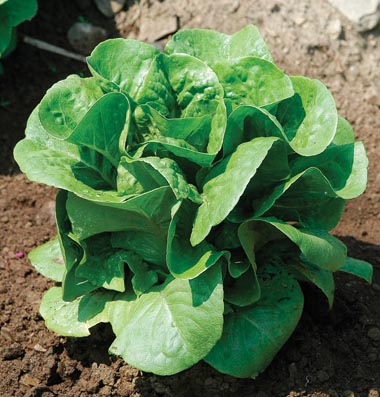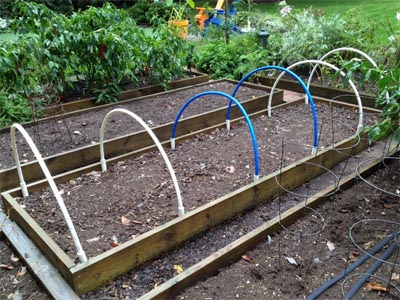How To Grow Lettuce That Likes Winter

Winter Density lettuce at maturity
By Gil Medeiros, former Fairfax Master Gardener
Most gardeners know that lettuce thrives in cool weather, fewer know that some varieties–with a little protection–can even survive through winter in our area. Winter Density, a Butterhead-type lettuce, is probably the most popular of these varieties. It produces 8-to-10-inch plants with loose leaves that have excellent flavor and crunchiness. Seeds are available from Johnny’s Selected Seeds, Territorial Seed Company, Amazon and many other vendors.
In late September or early October, I sow the seeds an inch apart, covering them with a half-inch of soil and spacing rows at 10 inches. I plant in one of my raised beds so that the seed bed has good drainage. Standard instructions say to thin the plants to about 3 inches, but I have skipped the thinning and still had good results. Plant at one-week intervals so that all the plants don’t mature at once.
The optimum soil temperature range for planting seeds is 60 to 68 degrees. The seeds germinate poorly at soil temperatures higher than 75 degrees. This phenomenon is known as thermal dormancy. I tried planting Winter Density in 80-degree soil once in September and got nothing. The seed will germinate at temperatures as low as 40 degrees. It takes about 10 days for the seeds to germinate and the plants mature in about 60 days. They can be harvested before maturity if you want baby greens.
This lettuce can survive temperatures in the 20s. Three years ago, during a pleasantly warm winter, I harvested lettuce all winter. The trick is to protect the plants from winter cold by erecting a low polyethylene tunnel over the seed bed. This serves a second purpose of keeping the rabbits out of the lettuce patch. I hasten to add that if the winter is as frigid as the last two winters were, your growing season will end abruptly when the bitter cold sets in. Unheated protection will not help when temperatures drop into the single digits.

Flexible polyethylene tubing forms the structure for a low tunnel over the planting bed
The poly tunnel keeps water inside once it is closed up so little watering is needed.
I usually harvest the whole plant when it has grown to about 8 inches. However, this is leaf lettuce, so it can be harvested by cutting the outside leaves and leaving the center. When treated this way, the plant will continue to produce.
In late winter, you can sow more seeds. This lettuce performs well in my backyard through May.
References
Winter Density Lettuce Seed, Johnny’s Selected Seeds
Growing Lettuce, Bonnie Plants